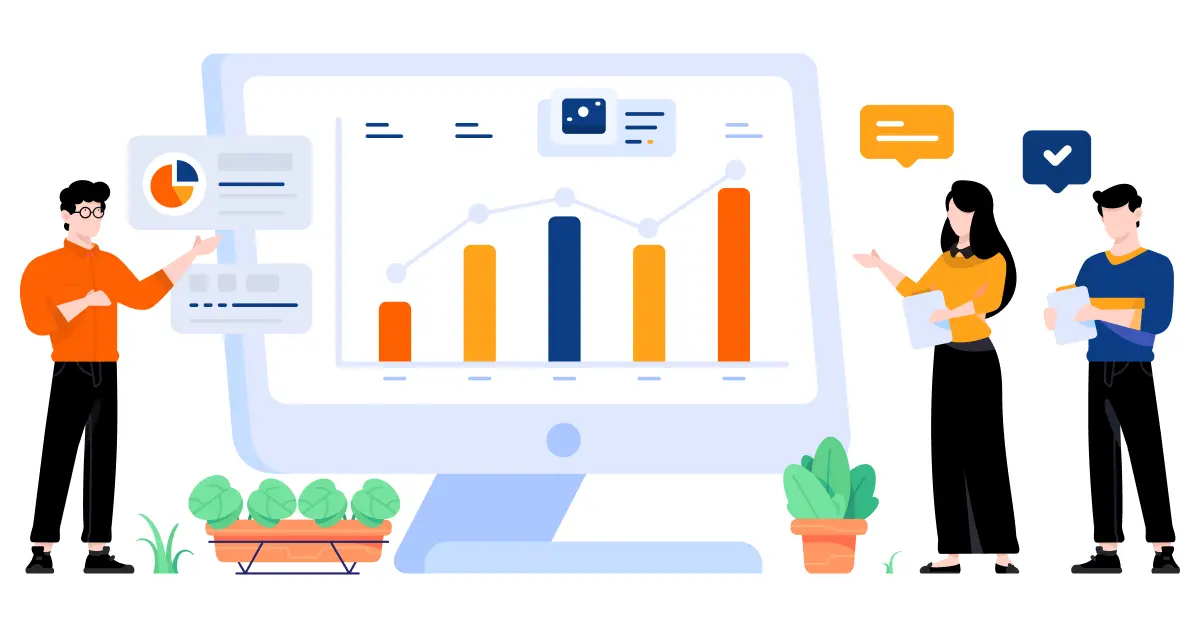
In the evolving business ecosystem, staying ahead means more than just meeting deadlines or achieving targets. It requires planning for your most valuable asset, your employees. Workforce planning and analytics have become the foundation for companies trying to stay ahead of their competitors. These tools help businesses anticipate future needs, balance talent with organizational goals, and create flexible teams ready to handle future challenges.
This blog will explain workforce planning and analytics and how they can improve employee productivity, performance, and engagement.
Table of contents
What is Workforce Planning?
Workforce planning is a strategic process followed by HRMs to ensure that the organization can meet its current and future staffing requirements. Findings from such planning are used to understand workforce talent demand and skill availability. This helps HR, managers, and team leaders to develop strategies to address manpower-related gaps. An effective strategy aligns employee resources with business objectives, ensuring the company remains agile and competitive.
Performance tracking solutions can help businesses monitor, analyze, and plan their workforce more effectively. With the help of workforce analytics software and time-tracking tools, organizations can better understand the utilization and allocation of their teams and other resources to adjust workforce and workload management strategies accordingly.
What is Workforce Analytics?
Nowadays, businesses rely heavily on data for its accuracy. Workforce analytics uses data analysis tools to monitor and improve employee productivity. With the help of analytics, companies can gain insight into employee performance and behavior, thus allowing managers to make more informed decisions.
By integrating workforce analytics tools like Leapmax, organizations can monitor workforce performance, giving management a comprehensive view of how employees perform over time.
Importance of Workforce Planning and Analytics
Workforce planning and analytics enhance short-term operations and long-term strategy. They also help in data-driven decision-making, employee performance management, skill assessment, and fulfilling future workforce needs.
A solution like Leapmax integrates well with employee productivity, allowing businesses to monitor real-time activities to track performance and improve operational excellence. Workforce analytics tools allow managers to understand employee behavior and are, thus, critical for decision-making, ensuring workforce planning strategies align with the business goals.
Key Benefits of Workforce Planning and Analytics
Here are the top benefits businesses can expect from applying the fundamentals of workforce planning and analytics to their day-to-day business:
1. Improved Employee Productivity
Workforce analytics help get insight into employee productivity and how they spend their work hours. With the help of appropriate data, organizations can optimize employee tasks and workflows. A report by McKinsey & Company suggests that with effective workforce planning, companies experience a 15% increase in productivity, a 7% higher return on assets, and a 5% increase in market value compared to their peers.
Using relevant tools here can help you track employee activities, measure productivity, and identify areas of improvement. Companies can use time-tracking software to ensure employees utilize their time effectively.
2. Better Workforce Allocation
Workforce planning helps companies allocate resources where they are needed the most. Analytics tools allow organizations to analyze future staffing needs and skill gaps, ensuring critical roles are always filled. With the help of actionable analytical insights, companies can improve overall employee efficiency.
When resources are allocated according to the requirement, the risk of burnout is reduced. By studying these insights, managers can optimize shift rosters and balance employee availability, improving employee productivity.
3. Enhanced Employee Engagement and Retention
A well-planned workforce tends to increase employee satisfaction. It reduces the risk of employee burnout and allocates the resources as per the requirement.
This makes employees more engaged and perform better when their roles align with their skills. A good workforce planning strategy ensures that employee preferences are also considered, leading to increased satisfaction and retention.
4. Improved Decision Making
Imagine managing a large workforce; all your decisions can not be fair as they could be viewed as biased. Therefore, to avoid such situations, managers can use workforce analytics tools. These tools will improve the accuracy of planning by offering clear insights into employee productivity, bridging skills gaps, and recruitment needs, as all the anticipations are based on facts.
However, it will not be the same if we use workforce analytics tools as a source for decision-making. By using workforce analytics tools like Leapmax, organizations can make data-driven decisions that align with process goals and objectives.
5. Improved Compliance and Risk Management
Workforce analytics helps identify potential risks to compliance. Employer monitoring tools can help companies ensure they comply with labor laws and regulations.
Leapmax’s time-tracking system helps reduce non-compliance risk by monitoring employee working hours, overtime, and employee activities. This is crucial in maintaining a healthy and legally compliant workforce.
How to Implement a Good Workforce Planning Strategy?
Implementing a robust workforce planning strategy involves several key steps:
1. Assess Current Workforce
Understanding your current workforce to identify skills, performance levels, and potential gaps.
2. Forecast Future Needs
Use workforce analytical insights to assess future requirements based on business growth, market conditions, and technological advances.
3. Develop Actionable Plans
Create plans to address gaps, including recruitment strategies, training programs, and resource reallocation.
4. Monitor Progress
Implement employee monitoring software or performance tracking strategies to check employee performance and productivity.
Conclusion
In conclusion, workforce planning and analytics are important in efficiently allocating resources—both human and physical. Employers can align the workforce with the process objectives and goals by assessing workforce skills and understanding future needs. Implementing the strategy will help managers improve workforce planning.
To better understand strategic workforce planning in modern organizations, you may use workforce analytics tools like Leapmax, which allow organizations to gain valuable insights into employee productivity, the skill gaps developed, and engagement levels so that employers can take relevant action at relevant times.







